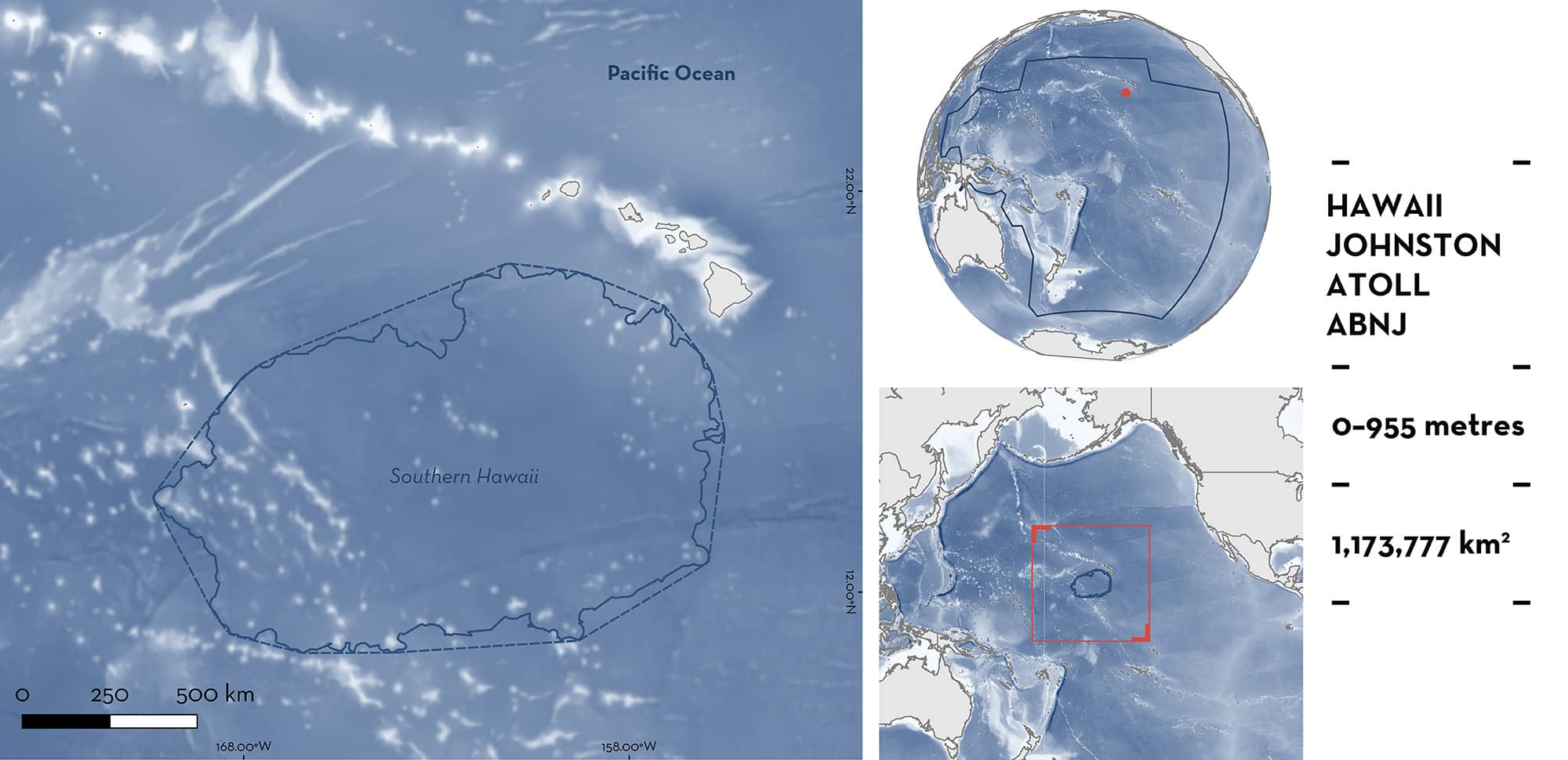ISRA FACTSHEETS
ISRA FACTSHEETS
NEW ZEALAND & PACIFIC ISLANDS REGION
Southern Hawaii
Summary
Southern Hawaii is located south and southwest of the main Hawaiian Islands. It includes pelagic waters of Hawaii and Johnston Atoll, which are part of the United States of America, and Areas Beyond National Jurisdiction (ABNJ). The area is influenced by the northeast trade winds and the North Equatorial Current flowing westward. It is characterised by pelagic waters. Within this area there are: threatened species and reproductive areas (Bigeye Thresher Alopias superciliosus).
Download factsheet
Southern Hawaii
DESCRIPTION OF HABITAT
Southern Hawaii is located south and southwest of the main Hawaiian Islands. It includes pelagic waters of Hawaii and Johnston Atoll, which are part of the United States of America, and Areas Beyond National Jurisdiction (ABNJ). The nearest land is Johnston Atoll ~60 km west and Hawai’i Island ~100 km northeast of the area. The area is influenced by the northeast trade winds and the North Equatorial Current flowing westward (Wyrtky & Kilonsky 1984). Below the surface current that is affected by poleward Ekman transport, the current flows towards the equator (Wyrtky & Kilonsky 1984).
The area partially overlaps with the Johnston Atoll Marine Key Biodiversity Area (KBA 2024) and with the Pacific Remote Islands Marine National Monument (UNEP-WCMC & IUCN 2024).
This Important Shark and Ray Area is benthic and pelagic and is delineated from surface waters (0 m) to 955 m based on the global depth range of the Qualifying Species.
CRITERION A
VULNERABILITY
One Qualifying Species considered threatened with extinction according to the IUCN Red List of Threatened Species regularly occurs in the area. This is the Vulnerable Bigeye Thresher (Rigby et al. 2019).
CRITERION C
SUB-CRITERION C1 – REPRODUCTIVE AREAS
Southern Hawaii is an important reproductive area for one shark species.
Pregnant, neonate, and young-of-the-year (YOY) Bigeye Threshers are observed in the area. Observer data on incidental captures of 24,457 Bigeye Threshers in longline fisheries reported to the Western and Central Pacific Fisheries Commission (WCPFC) from 2013–2022 show a strongly defined hotspot in captures in this area (WCPFC 2022). Additionally, historical data (1996–2006) from Japanese fisheries reveal that this same area is important for the reproduction of the species (Matsunaga & Yokawa 2013). Bigeye Threshers with a precaudal length (PCL) <80 cm were classified as neonate (Matsunaga & Yokawa 2013), considering the size-at-birth of the species of ~70 cm PCL (Chen et al. 1997). Neonates had a clear and latitudinally narrow hotspot of occurrence, mainly within the area, but also including additional waters further west (Matsunaga & Yokawa 2013). They were captured almost exclusively in boreal winter and spring, indicating a defined pupping season. Additionally, juveniles <100 cm PCL, including YOY and 2-3-year-old individuals, were also captured in this same area, highlighting that early life stages of Bigeye Threshers are present in this area for several years. Pregnant females (n = 267) were also captured in this area in winter and spring, with additional captures north of the area in summer and autumn (Matsunaga & Yokawa 2013). Parturition is likely to occur within the area between latitudes ~10-15ºN and longitudes ~150-180ºW during winter and spring, based on the distribution of pregnant females with large embryos and small neonates (Matsunaga & Yokawa 2013).
Although there are no contemporary data on the reproduction of the species in this area, the overlapping hotspot of high capture rates in the historical and contemporary data, and the overlap with the defined area important for neonates, YOY, and pregnant Bigeye Threshers in the historical data show that the species regularly and predictably uses this area for reproduction.
Download factsheet
SUBMIT A REQUEST
ISRA SPATIAL LAYER REQUEST
To make a request to download the ISRA Layer in either a GIS compatible Shapefile (.shp) or Google Earth compatible Keyhole Markup Language Zipped file (.kmz) please complete the following form. We will review your request and send the download details to you. We will endeavor to send you the requested files as soon as we can. However, please note that this is not an automated process, and before requests are responded to, they undergo internal review and authorization. As such, requests normally take 5–10 working days to process.
Should you have questions about the data or process, please do not hesitate to contact us.


